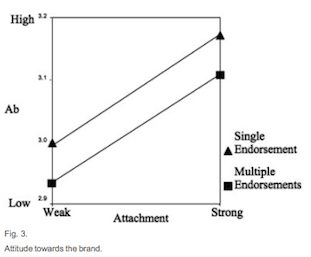The advert by Apple consists of celebrities modelling Beats headphones through taking selfies, or as referred to in this advert, "Solo Selfies". The advert continues with this repeated imagery of celebrities featuring the likes of rapper Nicki Minaj, model Jourdan Dunn and athlete Serena Williams also modelling the headphones in various colours whilst taking a Solo Selfie in various situations/environments.
Apple uses the high status admirer altercast tactic through the use of celebrities to promote their headphones. This tactic is increasingly popular; especially in today’s celebrity-obsessed culture and companies take advantage of this by using celebrities, whom the younger crowd (their target consumers) are familiar with to endorse their products. Furthermore, another tactic used by Apple is the attractive-admirer altercast. We often wish emulate the celebrity lifestyle by modelling their behaviour and look, finding them physically attractive and looking up to them. Using this tactic, in order to immerse into the celebrity culture and seek their approval, the advert description encourages us to purchase the headphones and also take Solo Selfies.
A study by Ilicic and Webster (2011) investigated the use of celebrity endorsers and the effects it had on the attitude of consumers and purchase intentions. Participants, all university students, were asked to fill in a questionnaire regarding their TV viewing and their familiarity with the celebrity endorser (out of two Australian TV personalities). They were then asked to view photographs of both figures and note down how attached they felt to them. This attachment was experimentally manipulated meaning, one celebrity was used for the “strong attachment” condition whilst the other was for the “weak attachment” condition – this was based on a pre-test poll was taking where the public were asked which celebrity they found the most attractive. Participants were then assigned to the “one brand” or “multiple brands” condition where they viewed either one or three adverts with the belief that either celebrity had signed a contract with this brand, or all three brands for the multiple brands condition. They were then asked to evaluate their attitude towards the brand, the advert and their purchase intention.
The graphs below summarizes the results from the study:
As figures 2 and 3 show, participants in the strong attachment condition held a significantly high (positive) attitude towards both the ad and the brand compared to those in the weak attachment condition. This was true for both the single and multiple endorsement conditions. Meaning, the more attached you are to a celebrity the more likely you are to hold a positive attitude towards the advert and brand in which they are featured, this effect is consistent regardless of the number of endorsements.
Figure 4 shows purchase intention for all conditions strong/weak attachment and single/multiple endorsements. Purchase intention was high when there was strong attachment and single endorsement compared to when there was a weak attachment and single endorsement, this intention went down when the celebrity endorsed multiple brands.
Ilicic and Webster (2011) concluded that attachment to celebrities impacts our attitudes towards the adverts and the brand the celebrity is endorsing. This attachment also affects our purchase intentions; we are more likely to buy a product if it is endorsed by a celebrity we are strongly attached to and this study is one of many showing just how powerful celebrity endorsements are in the advertising world.
REFERENCES:
Ilicic, J., & Webster, C. M. (2011). Effects of multiple endorsements and consumer-celebrity attachment on attitude and purchase intention. Australasian Marketing Journal, 19, 230-237.
REFERENCES:
Ilicic, J., & Webster, C. M. (2011). Effects of multiple endorsements and consumer-celebrity attachment on attitude and purchase intention. Australasian Marketing Journal, 19, 230-237.




No comments:
Post a Comment
Note: Only a member of this blog may post a comment.